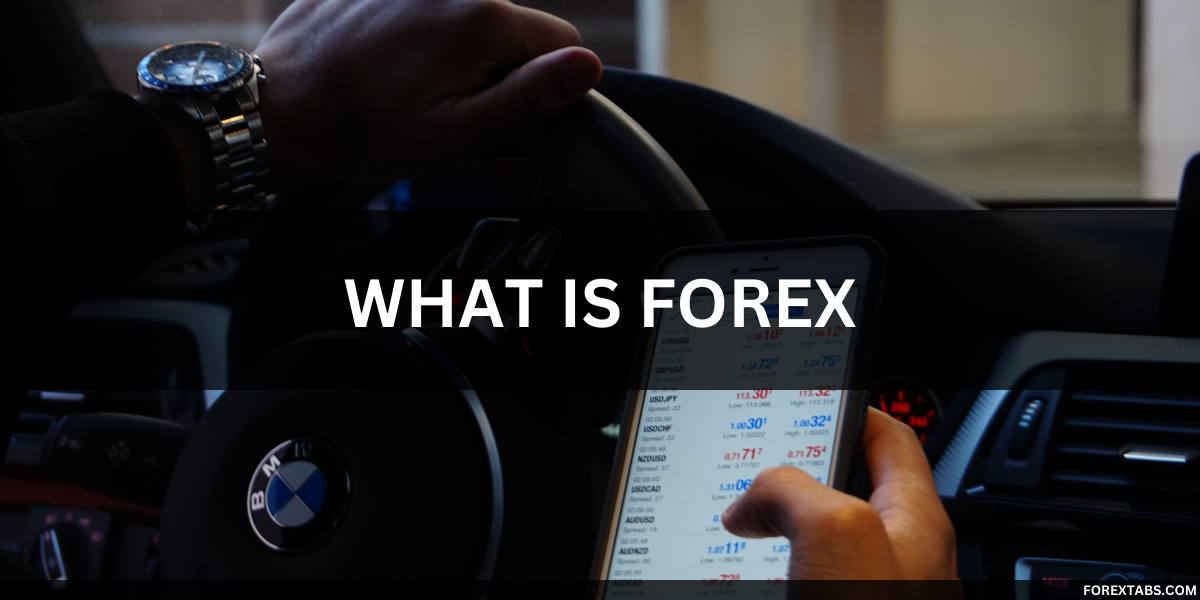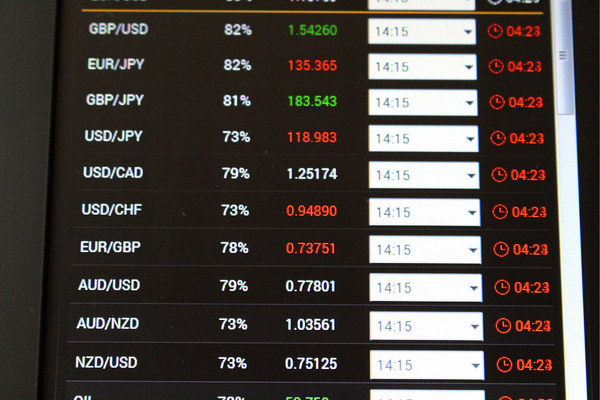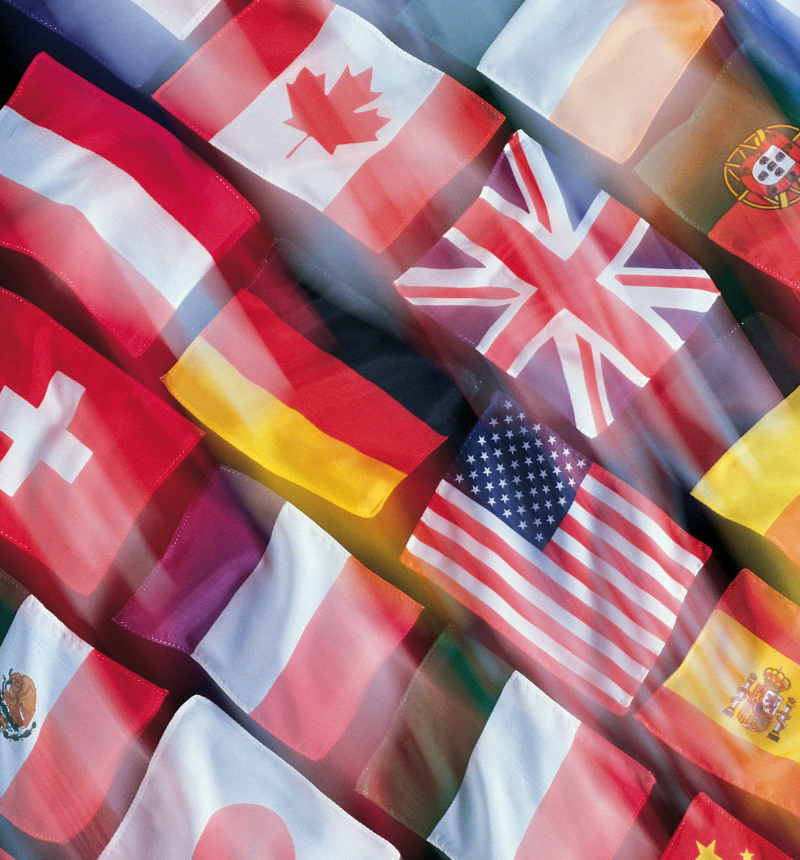
An Introduction to Forex Trading
The modern Forex Exchange market emerged in the 1970s.
Forex trading, also known as currency trading, is the buying and selling of currencies on the foreign exchange market, the largest financial market in the world. Trillions of dollars are traded in this market every day, but it is a highly speculative market that is not suitable for everyone.
How Forex Works
Forex trading involves the trading of currency pairs, such as EUR/USD or GBP/JPY, usually the major currencies in the world. The first currency is the base currency, while the second is the quote currency. Basically, traders try to earn a possible profit by speculating on the movement of exchange rates.

Why Forex Trading?
- High liquidity: Forex is the most liquid financial market in the world, which means it is easy to buy and sell currency pairs.
- 24/5: Forex markets are accessible 24 hours a day, 5 days a week. This allows traders to trade at any time of day.
- Low entry barrier: The entry cost for forex trading is generally very low compared to other financial markets.
- Potential for earnings: Traders can potentially earn a good profit from the markets, as many brokers provide leverage options. However, it is important to know that this is a risky activity, so proceed with caution.
- Access to a global market: Forex traders can tap into a global marketplace, hedging their bets and minimizing their losses.
Where To Trade Forex?
The foreign exchange market, commonly known as Forex, is the arena where currencies are traded, making it the largest and most liquid market in the world. But to effectively navigate the vast ocean of currency pairs and economic indicators, one needs a reliable vessel: a Forex broker. Brokers act as intermediaries between retail traders and the interbank currency market. They provide the necessary trading platform, tools, and research to help traders make informed decisions.
Selecting the right broker is akin to setting the foundation for your trading endeavors. A broker’s platform determines the quality of information you receive, the tools at your disposal, the spreads you’ll pay, and even the security of your investment.
In this dynamic and ever-evolving market, having a partner like ForexTabs.com can be invaluable. With comprehensive reviews and insights, ForexTabs.com guides traders towards the best brokers in the industry, ensuring a seamless and profitable trading experience. Remember, in the Forex market, it’s not just about participating; it’s about having the right ally by your side.
Who Trade Forex?
The world of Forex isn’t limited to financial juggernauts and governmental institutions; it’s a vibrant tapestry of participants from various walks of life. At one end of the spectrum, we have central banks and financial institutions shaping monetary policies and ensuring liquidity. Then there are corporations, which trade currencies for commercial reasons and to hedge against fluctuations. But in recent years, the spotlight has increasingly shone on individual retail traders.
Empowered by technological advancements and online broker platforms, these traders come from diverse backgrounds – be it a seasoned investor eyeing the yen’s movements after a sushi lunch or a college student in her dormitory, speculating on the euro before her European summer trip. The allure of Forex’s vast liquidity, 24-hour trading cycle, and the potential for profit attracts a myriad of players, making it a truly global and inclusive marketplace.

Best Countries to Trade Forex
Forex trading has revolutionized due to technology, making transactions swift and accessible right from your smartphone. But if you’re a profitable trader, which country would best complement your lifestyle?
Key factors to consider include forex regulations, living expenses, internet speeds, and crime rates. For professional traders, even high living costs can be easily managed. Keeping these in mind, here are the top 10 countries:
- Belize
- Malaysia
- Brunei
- Monaco
- Oman
- Belgium
- Singapore
- United Arab Emirates (UAE)
- New Zealand
- Switzerland
Market Categories in Forex
Forex Market Segments Forex trading occurs predominantly in three areas: spot, forward, and futures. The most dominant and foundational is the spot market.
The forward and futures markets primarily attract businesses and financiers looking to mitigate future forex risks.
Spot Market – This is where currencies are exchanged based on current prices, influenced by factors like interest rates, economic indicators, global politics, and price forecasts. While “spot” suggests immediacy, these transactions often take two days to settle.
Forward and Futures Markets – The forward market involves bespoke agreements, negotiated directly between two parties, dictating future currency exchanges. Contrarily, futures contracts are standardized deals made on public exchanges, such as the Chicago Mercantile Exchange, with set parameters like unit counts and settlement dates. This structured environment provides clear trade execution and finalization.
Forex Market Categories and Their Impact on Traders:
Spot Market:
- Quick Trades: Allows instant trading at current prices, ensuring swift decisions.
- High Liquidity: Offers easy entry and exit, but traders must stay updated on global events that can shift prices rapidly.
- Two-Day Wait: Despite its ‘instant’ nature, settlements usually take two days, affecting cash flow
Forward Market:
- Risk Management: Traders can lock future rates, shielding them from potential adverse rate shifts.
- Flexibility vs. Risk: While these OTC contracts are customizable, they come with heightened counterparty risks due to less regulatory oversight.
Futures Market:
- Uniformity: These exchange-traded contracts follow set standards, ensuring transparency but reducing customization.
- Controlled Risk: Traded on official platforms, they offer clearer oversight, reducing some trading risks.
- Leverage’s Double-Edged Sword: Allows for larger positions with less capital, but can amplify both gains and losses.
In summary, the forex market’s segments influence a trader’s approach, potential gains, risks, and capital usage. Thus, understanding each is essential for aligning with individual trading preferences and risk appetites.

How to Start Forex Trading?
Initiating a foray into forex trading can often appear overwhelming, but with structured guidance, it transforms into a path paved with potential. The first step is to immerse yourself in knowledge. Thankfully, platforms like ForexTabs.com offer a plethora of resources, tailored courses, and insightful webinars designed for newcomers. After absorbing the basics, it’s crucial to align with a trustworthy broker, ensuring they resonate with your envisioned trading trajectory and provide an intuitive platform.
Practice is paramount; leverage the power of demo accounts to hone your skills without financial risks. Always be aware of potential pitfalls, establish financial limits, and remain committed to ongoing education. With ForexTabs.com by your side, you’re not just predicting market movements, but making well-informed, strategic decisions fueled by constant learning and diligence.
The Value of Partnering with ForexTabs.com
In the intricate world of forex trading, having reliable guidance and resources is paramount. This is where ForexTabs.com truly shines. As the vast landscape of currency trading continues to evolve, beginners and experienced traders alike can benefit from a partner that provides in-depth reviews, educational resources, and genuine insights.
Whether you’re taking your first steps in forex or looking to refine your strategies, ForexTabs.com serves as a beacon, guiding traders towards informed decisions and successful trading experiences. As you navigate the tumultuous waves of the forex market, let ForexTabs.com be your trusted compass, ensuring you not only survive but thrive in this exciting financial arena.
COntact Us
CONTACT US PAGE
Address
1 George Street Singapore
Services
Top Forex Brokers
Best Trading Platform
Lowest Cost Trading
Best Rewards Scheme
Top Brokers By Country
Your content goes here. Edit or remove this text inline or in the module Content settings. You can also style every aspect of this content in the module Design settings and even apply custom CSS to this text in the module Advanced settings.
